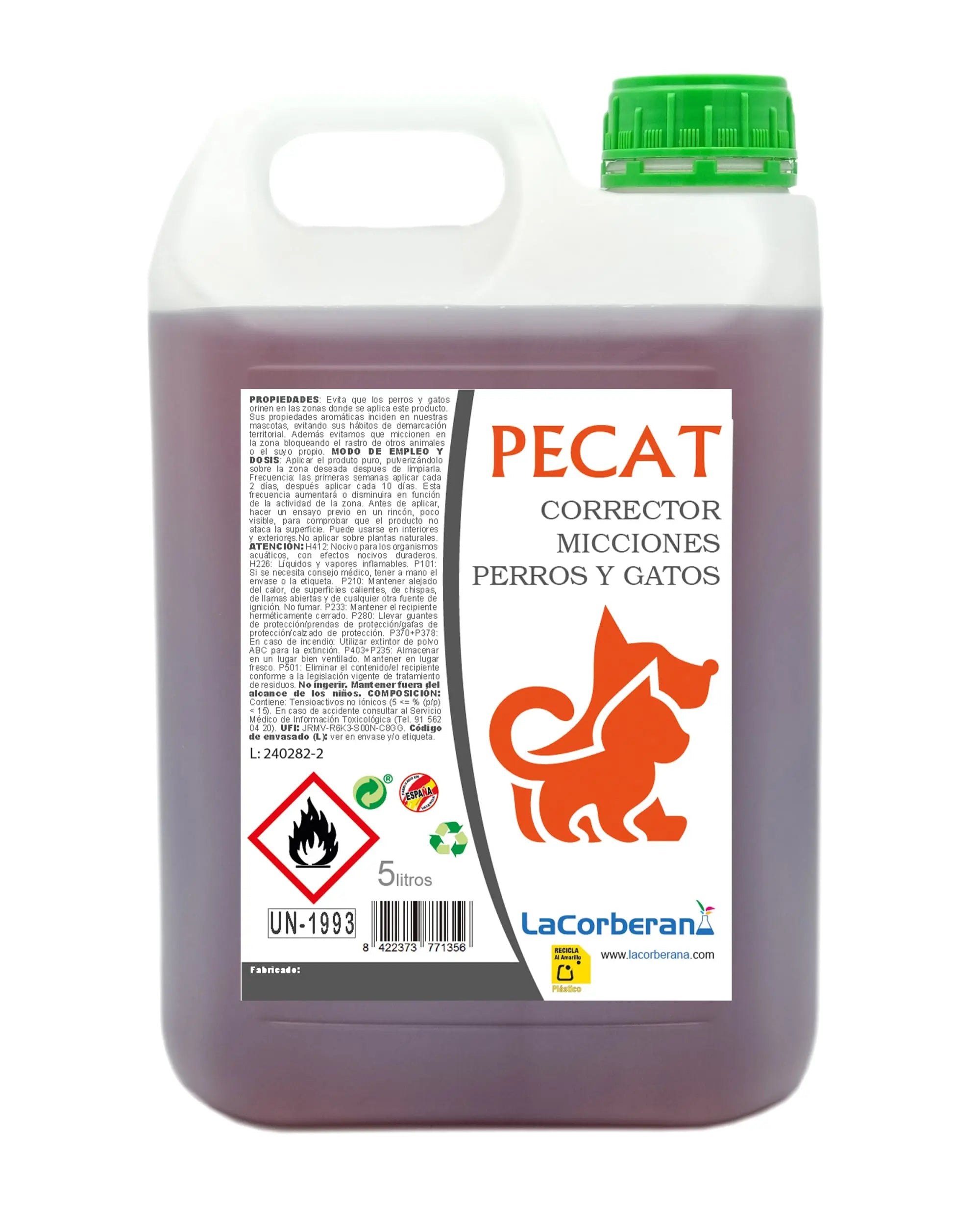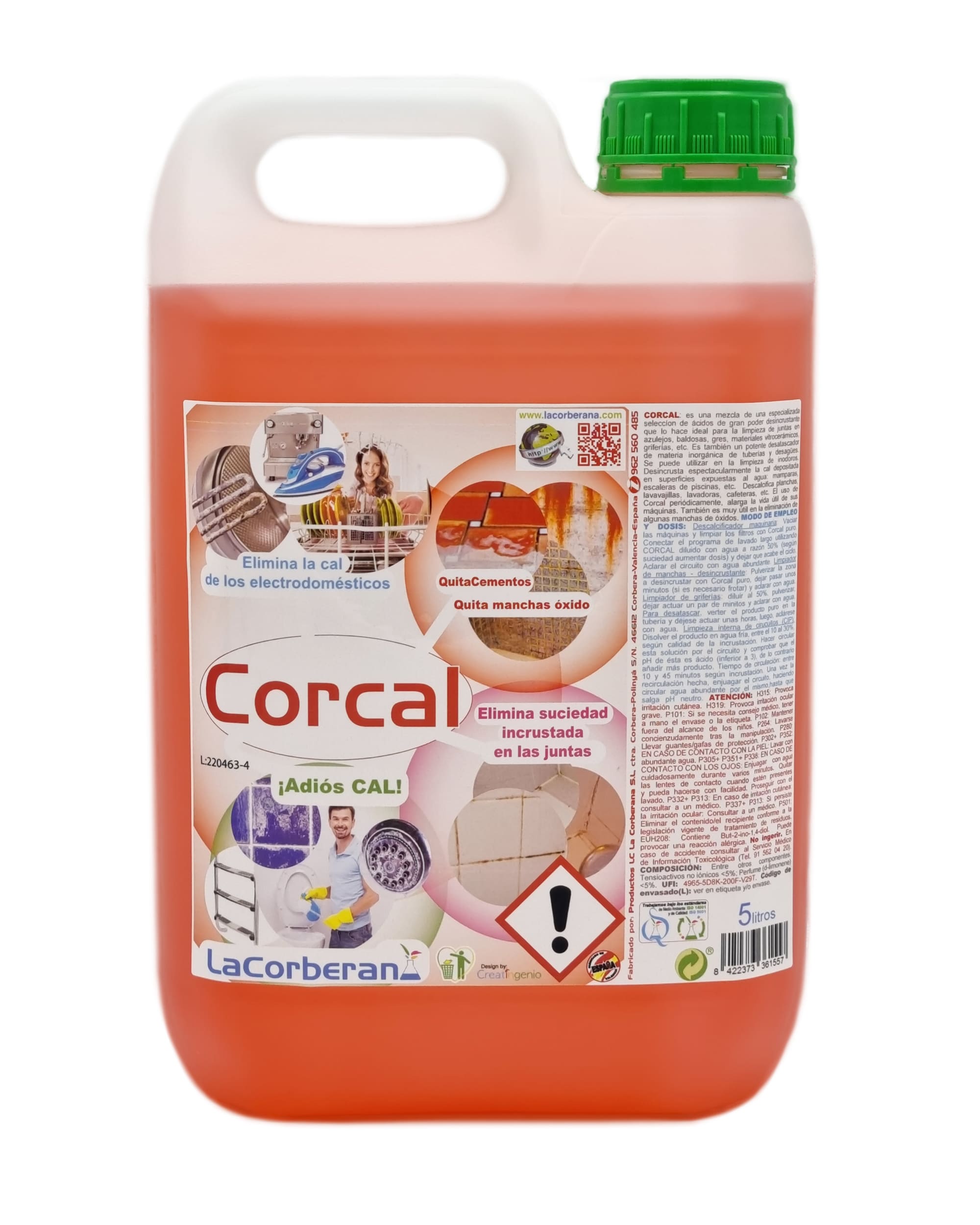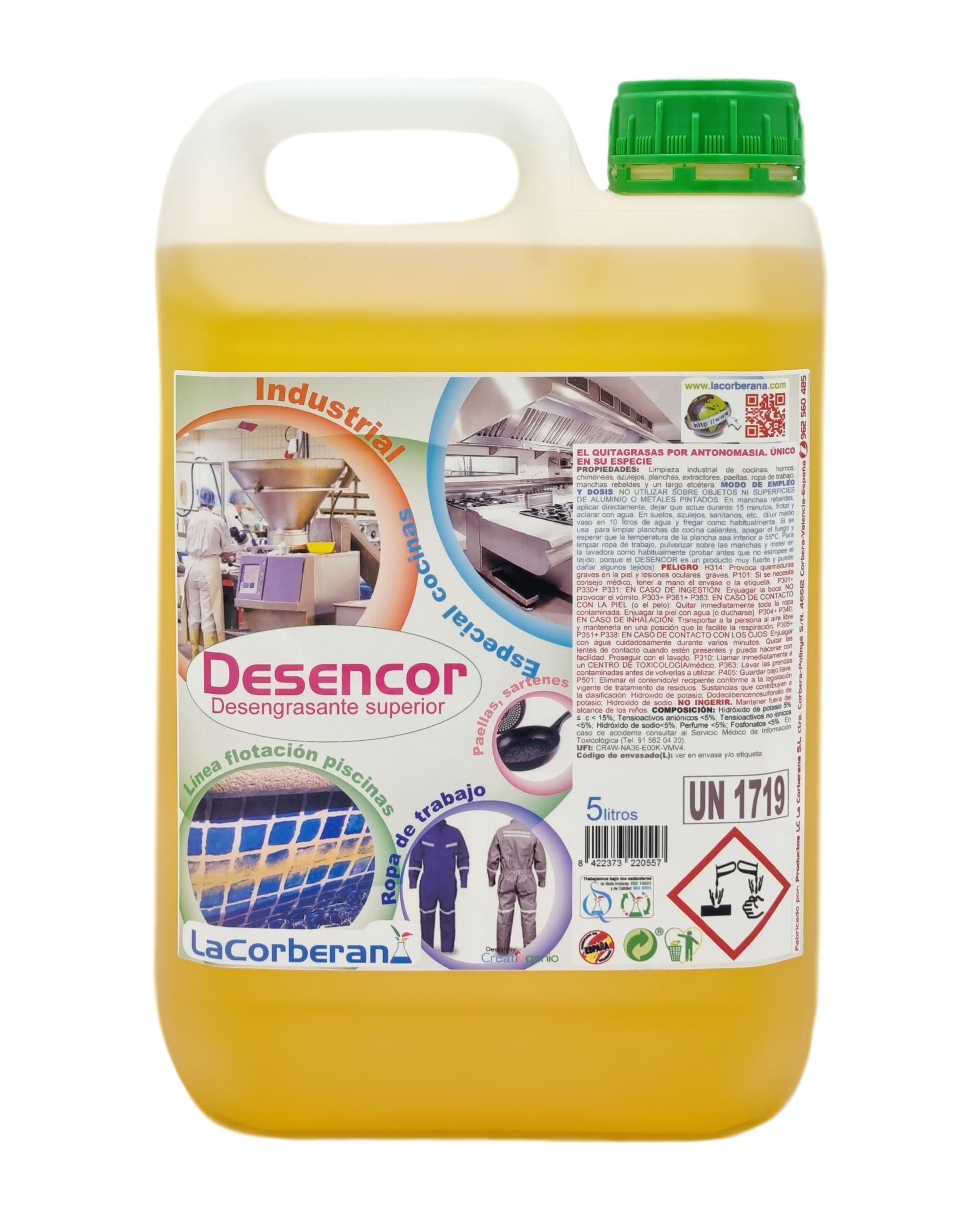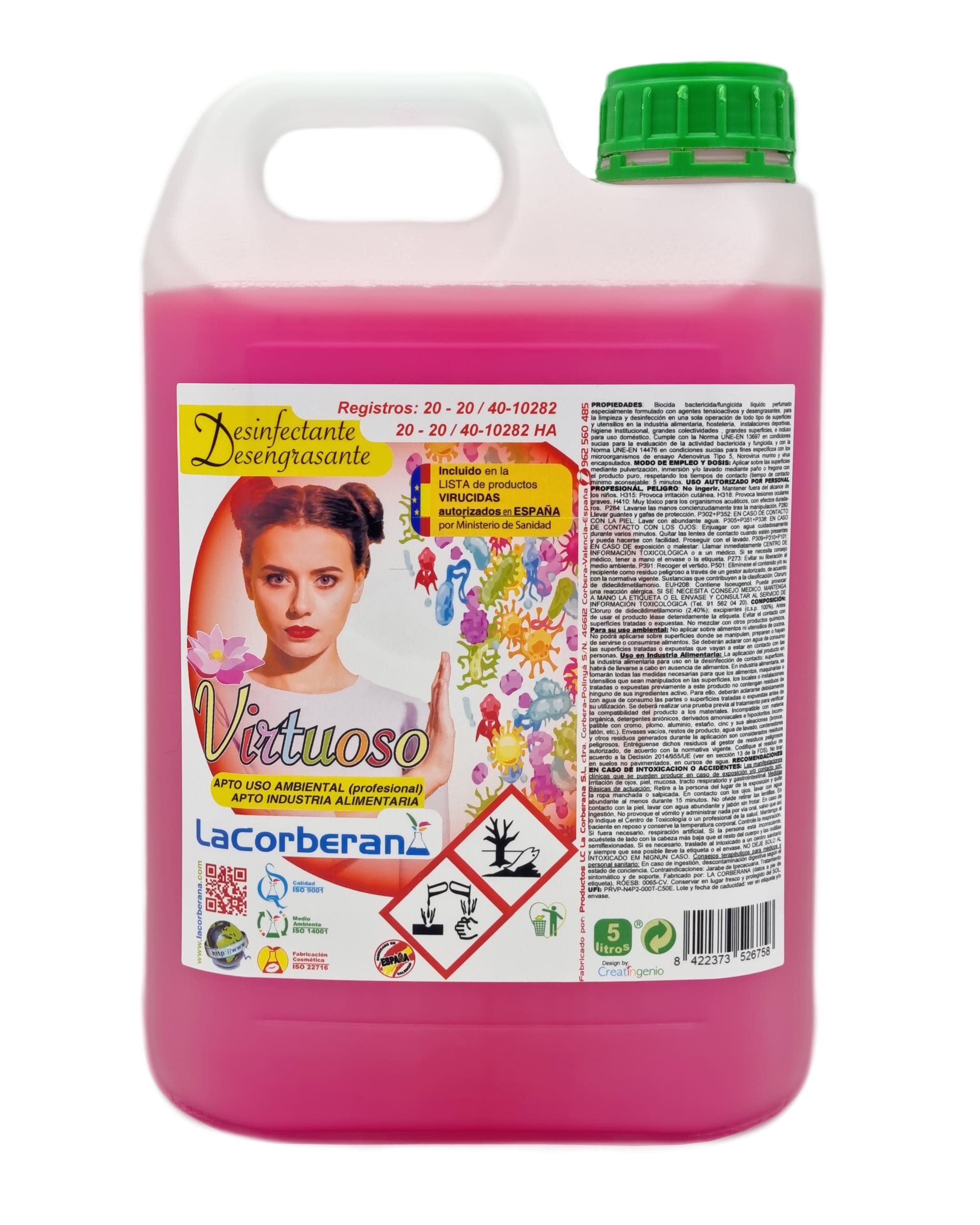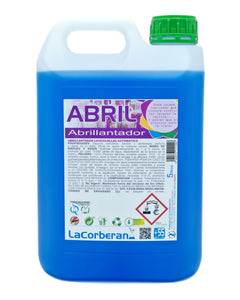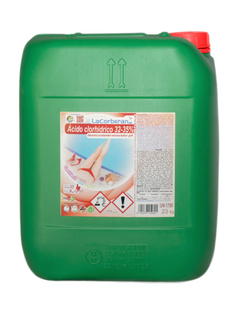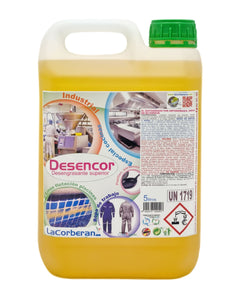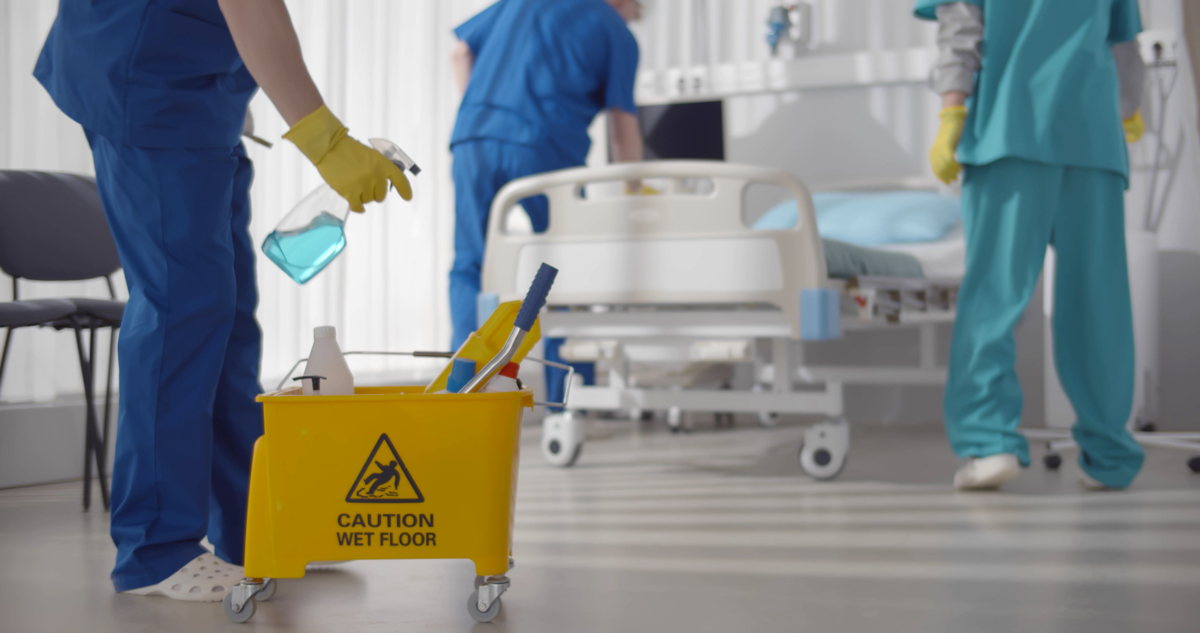Healthcare in hospitals is not only limited to medical treatment and patient care, but also to the creation of a clean and safe environment for everyone: patients, visitors and staff .
In fact, hospital cleaning It is a cornerstone of infection prevention, making it crucial to ensure the safety and well-being of everyone who enters your facility. And this is especially important in a world where pathogens and antibiotic-resistant bacteria pose a growing threat.
Aware of these challenges, as specialists in the field of hygiene and disinfection , from The Corberana We have prepared a guide with a detailed and practical approach on how to clean and disinfect hospitals, adapting to the highest standards of health and efficiency.
From the selection of hospital cleaning products suitable for disinfection to the implementation of specialized procedures, our goal is to provide the tools necessary to maintain a impeccable, safe hospital environment conducive to patient recovery .
Cleaning areas in hospitals
Before establishing a cleaning protocol, it is important to differentiate the different common areas in hospitals and health clinics, since Not all areas require the same cleaning, disinfection and sterilization protocol .
In fact, areas of a hospital are classified according to their associated infection risk level, which determines the frequency and method of cleaning required.
Below we detail the main areas that must be subject to specialized attention to ensure the cleanliness of a hospital.
1. Critical areas
Critical areas include operating rooms, intensive care units (ICU), isolation rooms and any other space where invasive procedures are performed.
These areas require the highest level of disinfection due to direct exposure to open wounds and the high risk of transmission of infections.
Cleaning is carried out with broad spectrum disinfectants, following strict protocols to minimize any risk of contamination .
2. Semi-critical areas
They include those areas that, although not directly exposed to invasive procedures, do have a frequent contact with patients or with devices that patients use .
Examples of semi-critical areas are: radiology rooms, physiotherapy units and patient rooms , especially when used for treatments involving the insertion of probes or catheters.
In this sense, special attention is required in cleaning the hospital bed, table, armchairs, bathrooms and any other furniture or space in the room. Cleaning in these areas combines sanitation and disinfection techniques to control the spread of microorganisms .
3. Non-Critical Areas
These are areas that have a relatively low risk of transmission of infections . They include public and office spaces such as lobbies, hallways, dining rooms and administrative areas .
Although the risk of infection is lower, effective cleaning is essential to maintain a safe and pleasant environment for all hospital users.
Regular cleaning with standard detergents and disinfectants is generally adequate for these areas.
4. Support and service areas
These areas include the kitchen, laundry, equipment and supplies storage, and waste management facilities .
Although direct contact with patients may be limited, proper cleaning and disinfection are crucial to prevent cross-contamination and ensure that supplies and services reaching critical and semi-critical areas are safe.
For each of these areas, It is essential to establish cleaning protocols that include frequency, products used and specific techniques .
It is also essential to have hospital cleaning staff specifically trained for these tasks, since, as this is an environment that requires a high level of cleanliness, it is necessary for them to know and follow the protocol indicated for each case.
Hospital Cleaning Manual, a practical guide for a safe environment
Hospitals require compliance with the highest standards of hygiene, disinfection and sterilization of the different areas to ensure a clean, safe and conducive environment for health care.
Types of hospital cleaning
The choice of frequency and techniques for hospital cleaning will be made based on the area to be cleaned, the type and quantity of organic matter present in the area and the urgency or need with which it must be cleaned.
Surface cleaning processes can be classified into 5 types :
1. Maintenance, concurrent or routine cleaning
It is the daily cleaning that is carried out in all semi-critical and non-critical areas of the hospital , including hallways, non-isolated patient rooms, offices and waiting areas.
Its objective is to maintain a basic level of hygiene by sweeping, mopping, cleaning surfaces and removing waste. This cleaning reduces the presence of microorganisms and provides a pleasant and safe environment for everyone .
2. Terminal cleaning
It is carried out in areas that have been vacated by patients , especially in rooms where infectious diseases have been treated or in operating rooms after each procedure.
Terminal cleaning is more thorough than routine cleaning and includes the disinfection of all surfaces, including walls, ceilings, floors, windows and all equipment and furniture. The objective is to eliminate any risk of infection for future occupants .
3. Decontamination cleaning
This type of cleanup focuses on areas contaminated with hazardous materials, such as spills of bodily substances or chemicals.
Requires specific protocols and the use of personal protective equipment to safely handle and dispose of contaminating materials, followed by thorough disinfection of the affected area.
4. Deep cleaning
Although similar to terminal cleaning, deep cleaning It is carried out at scheduled intervals and not necessarily after a space has been vacated .
It focuses on high-touch, hard-to-reach areas that may be prone to dirt and microorganism buildup. Includes cleaning of vents, changing of air filters and deep disinfection of medical equipment .
5. High-level cleaning
Particularly relevant in critical areas such as operating rooms, intensive care units (ICU) and isolation rooms. This type of cleaning involves the use of disinfectant and sterilizing products for surfaces and equipment that are in direct contact with patients or that are used in invasive procedures.
It is carried out following strict regulations to prevent the transmission of infections.
 Skip to content
Skip to content
